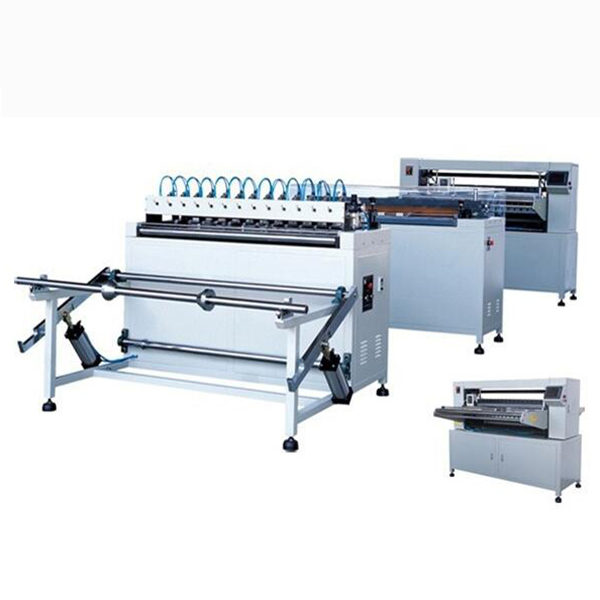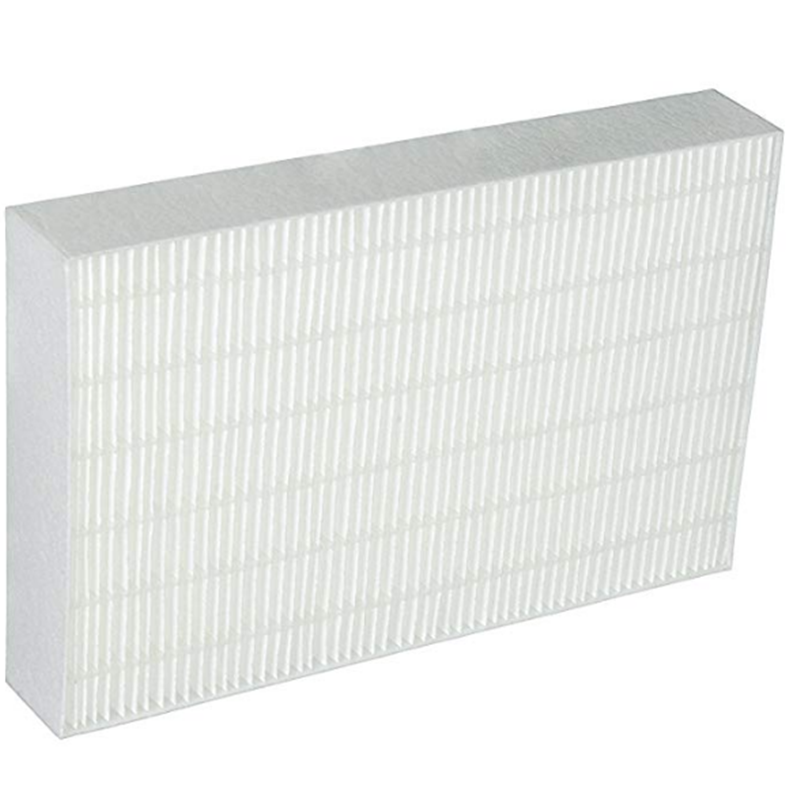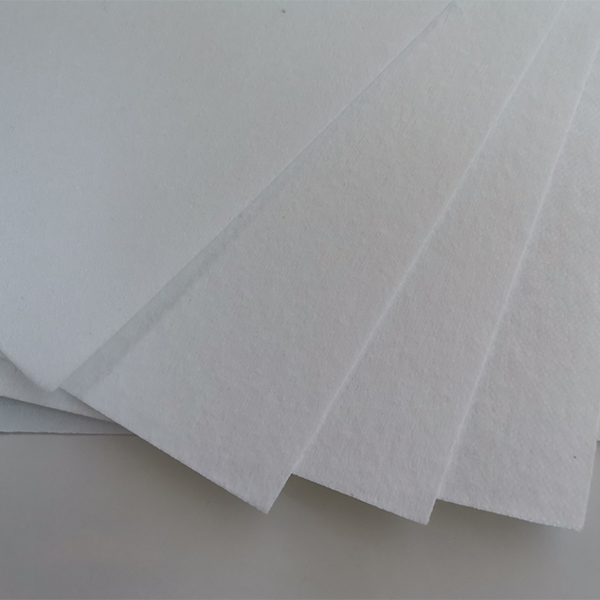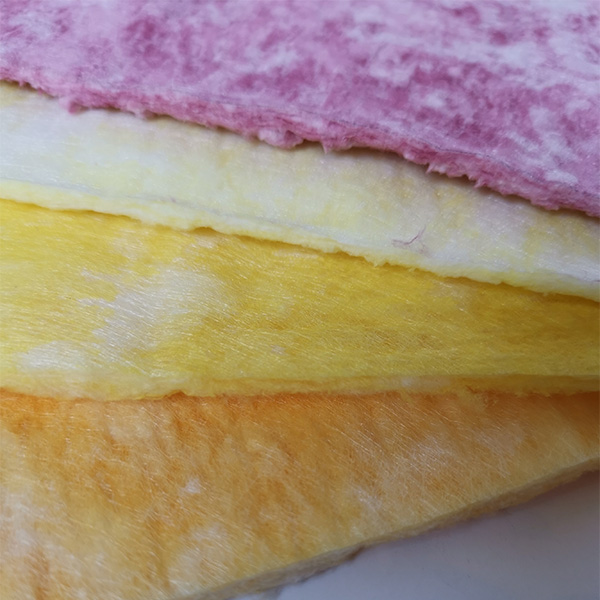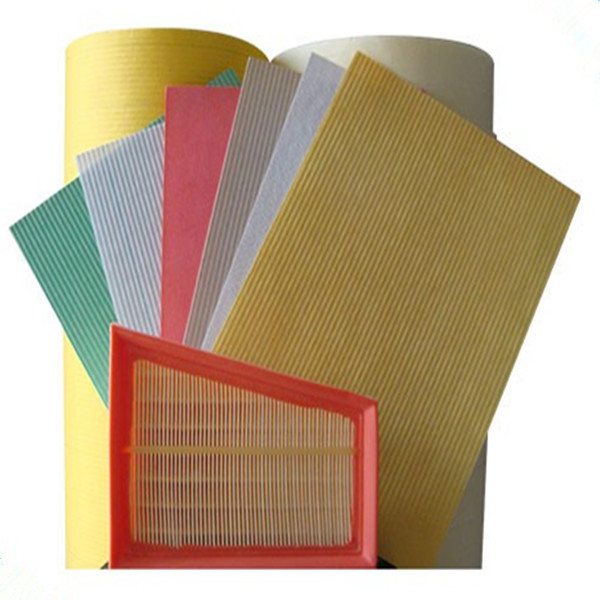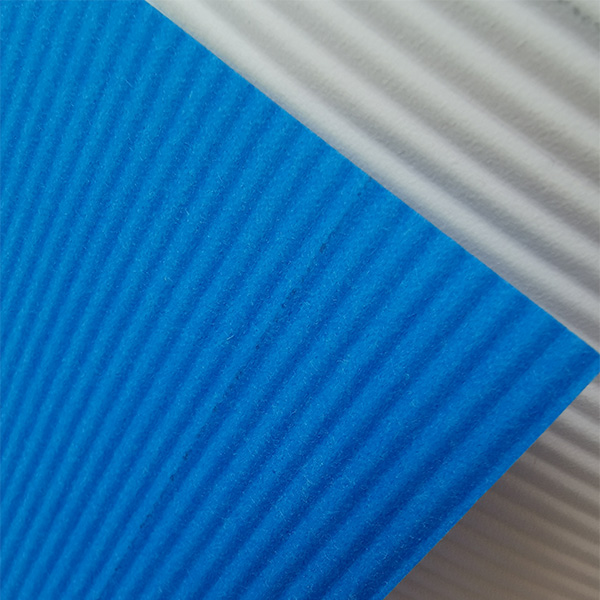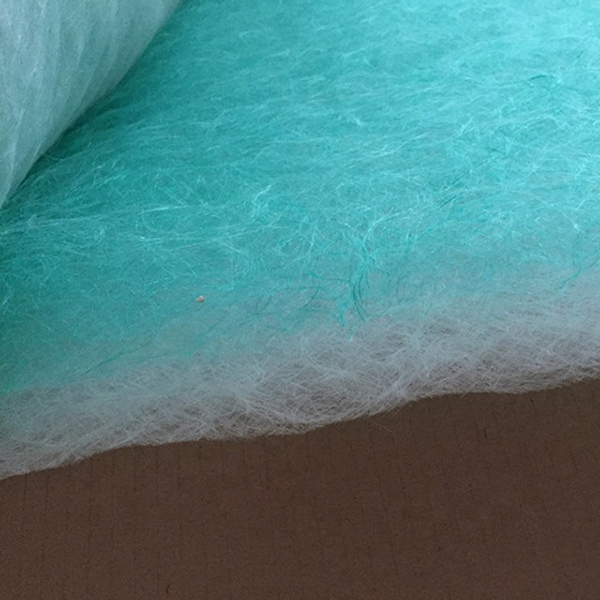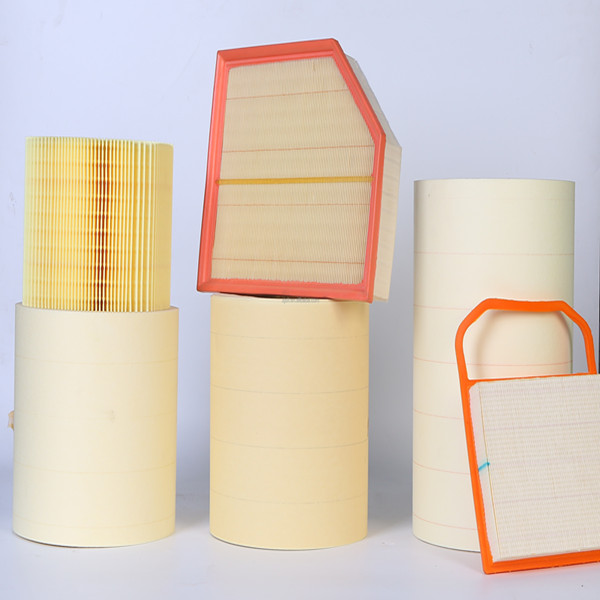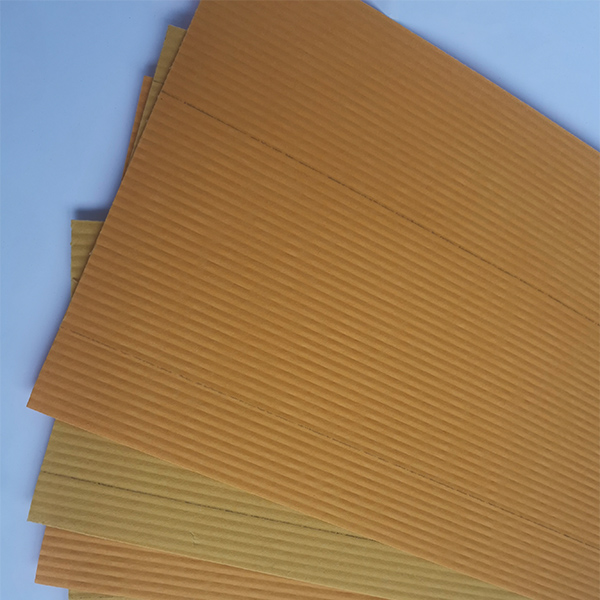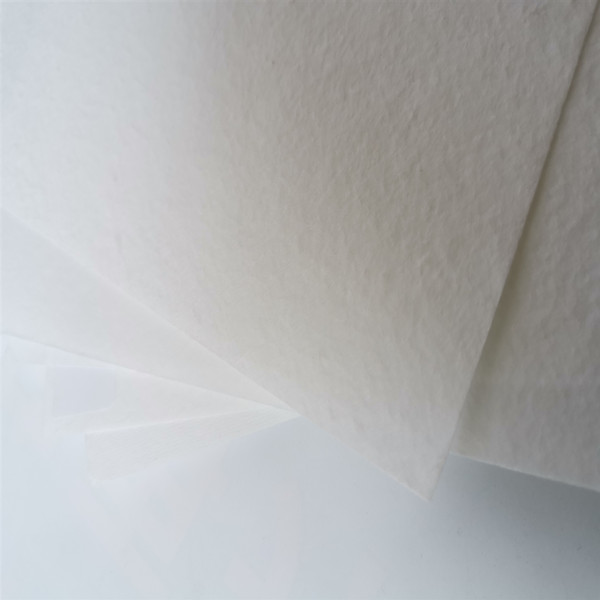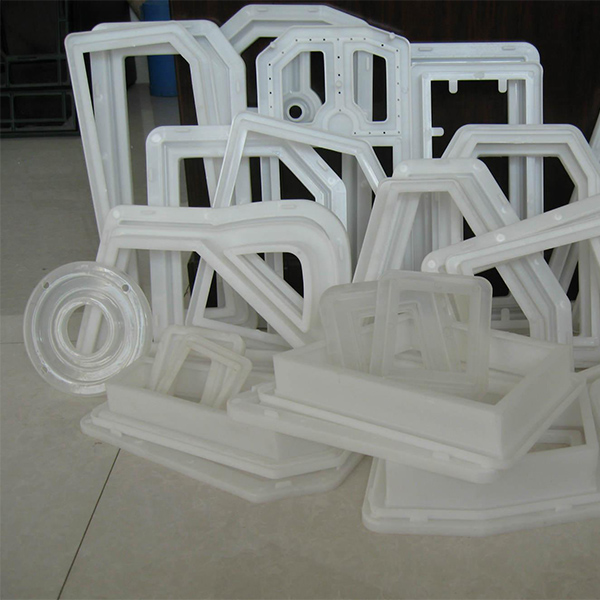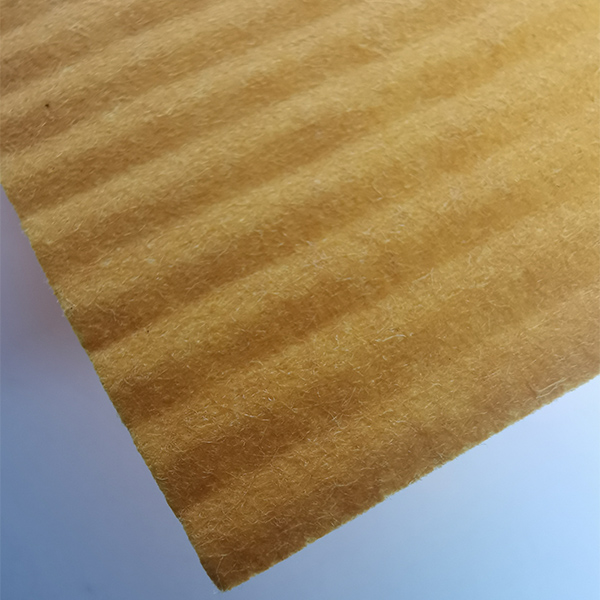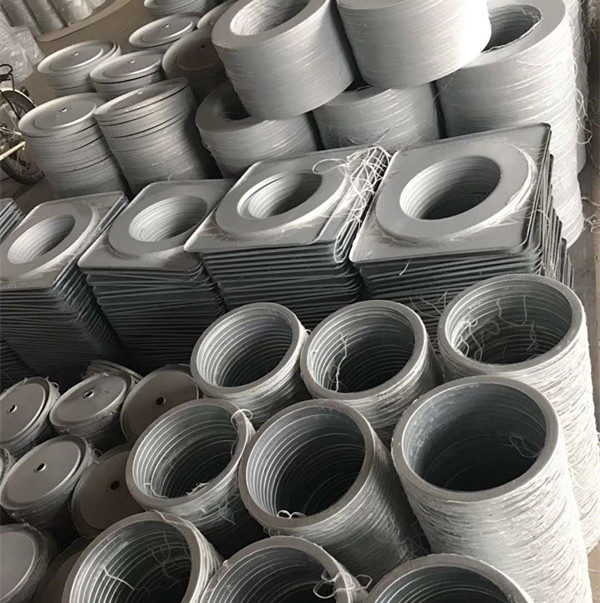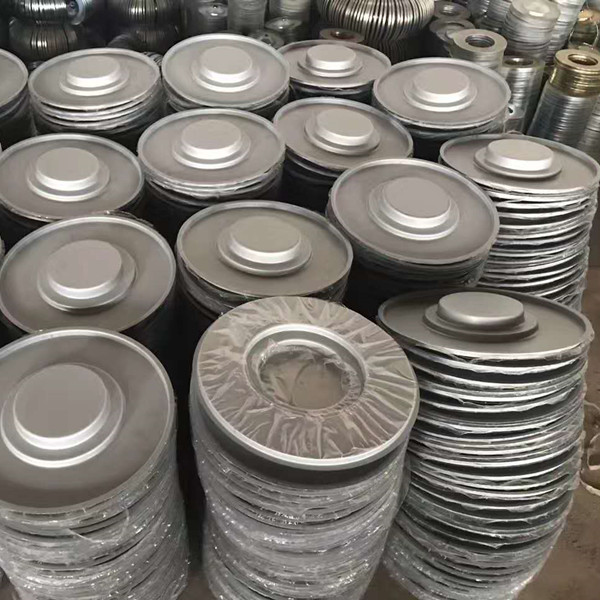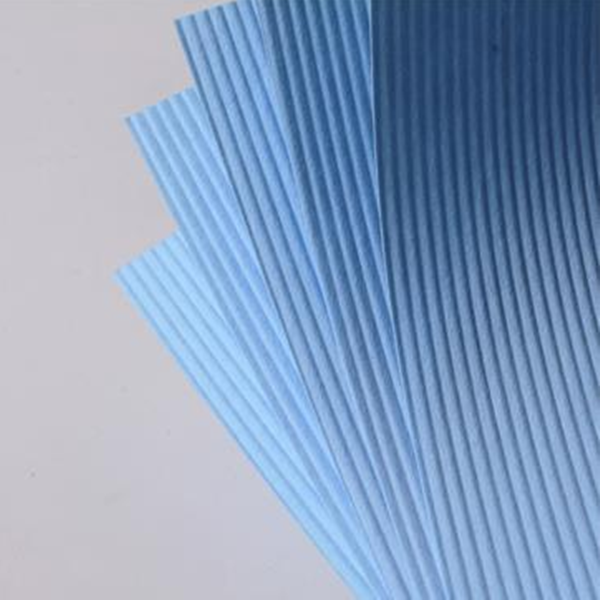The Indispensable Role of Industrial Air Filter Cartridges in Modern Manufacturing
In the intricate landscape of modern industrial operations, effective air filtration is not merely a regulatory compliance issue; it is a cornerstone of operational efficiency, environmental stewardship, and employee safety. At the heart of this critical function are industrial air filter cartridges, sophisticated components designed to capture a wide array of particulate matter, from fine dusts to hazardous fumes. These filters are essential for maintaining clean air quality, protecting machinery from abrasive particles, and ensuring the health of the workforce. Their pivotal role makes them a vital investment for any facility committed to sustainable and productive operations.
The global demand for high-performance filtration solutions, particularly industrial air filter cartridges, continues to surge. This growth is driven by tightening environmental regulations, increasing awareness of occupational health, and the continuous advancement of manufacturing processes that generate diverse airborne contaminants. Industries ranging from pharmaceuticals and food processing to heavy metallurgy and cement production rely heavily on robust filtration systems. Our flagship product, the Industrial Removal Cartridge Dust Filter, stands as a testament to our commitment to delivering superior air purification solutions, engineered to meet the most demanding industrial requirements.
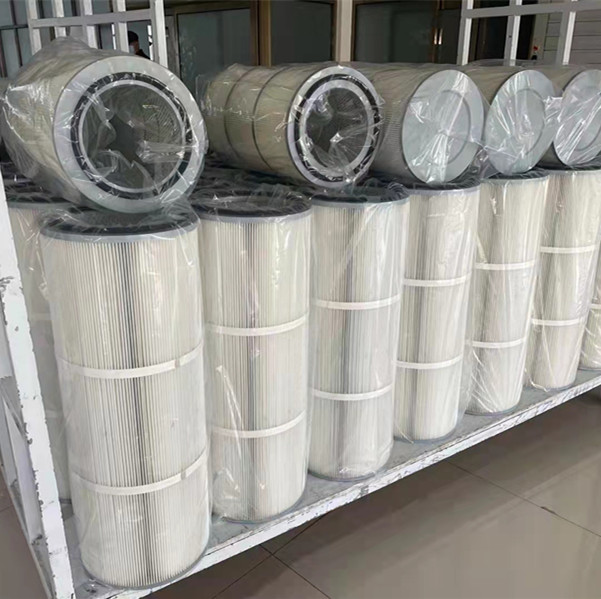
Figure 1: A general overview of high-efficiency industrial air filter cartridges.
Industry Trends Shaping the Future of Industrial Filtration
The industrial filtration market is dynamic, evolving with technological advancements and stricter environmental mandates. Several key trends are shaping the design, material science, and application of industrial air filter cartridges:
- Smart Filtration Systems: Integration of IoT (Internet of Things) sensors for real-time monitoring of filter performance, pressure drop, and remaining lifespan. This allows for predictive maintenance, optimizing replacement schedules and reducing downtime. Data analytics for performance optimization is becoming standard.
- Advanced Filter Media: Development of novel materials, including nanofiber media, PTFE membranes, and treated cellulose, to achieve higher filtration efficiencies (e.g., MERV 16+ or HEPA standards) and extended service life. These materials offer superior dust cake release characteristics and enhanced resistance to moisture and chemicals.
- Energy Efficiency: A significant focus on designing filters that minimize pressure drop across the system, thereby reducing the energy consumption of industrial dust collectors. Lower resistance translates directly into savings on electricity costs for fans and blowers.
- Sustainability and Recyclability: Growing emphasis on eco-friendly manufacturing processes for filters and the development of recyclable or reusable filter components to reduce environmental impact. Manufacturers are exploring biodegradable materials and end-of-life solutions.
- Customization and Specialization: Increasing demand for tailor-made industrial air filter cartridges designed for specific dust types, chemical environments, and temperature ranges, moving away from one-size-fits-all solutions. This includes filters with flame-retardant, anti-static, or oleophobic properties.
- Stricter Regulatory Compliance: Global tightening of air quality standards (e.g., EPA, OSHA, EU directives) is compelling industries to invest in more effective and reliable dust collection systems, placing greater importance on the certified performance of industrial air filter cartridges.
Unpacking the Technical Parameters of Industrial Air Filter Cartridges
Understanding the technical specifications of industrial air filter cartridges is crucial for selecting the right solution for any given application. Key parameters directly influence performance, efficiency, and longevity. Our Industrial Removal Cartridge Dust Filter excels across these critical metrics:
Key Performance Indicators for Industrial Cartridge Dust Filters:
- Filtration Efficiency: This refers to the percentage of particulate matter a filter can capture at a specific particle size. Measured commonly by MERV (Minimum Efficiency Reporting Value) ratings for HVAC applications, or more stringently for industrial filters as percentages at sub-micron levels (e.g., 99.9% at 0.3 microns for HEPA). High efficiency means cleaner air and better protection.
- Media Type: The material used in the filter element. Common types include cellulose (for general industrial dust), polyester (washable, durable, resistant to moisture), PTFE membrane (for fine, sticky, or hygroscopic dusts, offering excellent dust release), nanofiber (superior sub-micron filtration), and blends. The choice of media is critical for specific dust characteristics.
- Pleat Depth and Count: These factors determine the total surface area of the filter media. More pleats and deeper pleats increase the filter surface area, allowing for higher dust holding capacity and lower pressure drop, extending the filter's service life.
- Dimensions (Diameter, Length): Standardized sizes (e.g., 12.75" OD x 26" L) ensure compatibility with various dust collector designs. Custom dimensions are often available for specialized equipment.
- Operating Temperature Range: The temperature limits within which the filter media can operate effectively without degradation. Different media types have varying temperature resistances, crucial for high-temperature industrial processes.
- Pressure Drop (Initial & Operating): The resistance to airflow across the filter. A lower initial pressure drop indicates less energy consumption for the dust collector fan. As dust accumulates, the operating pressure drop increases, indicating the filter needs cleaning or replacement.
- Dust Holding Capacity: The amount of dust a filter can hold before its pressure drop becomes excessively high, necessitating cleaning or replacement. Higher capacity means longer service intervals.
- Burst Strength: The maximum differential pressure a filter can withstand before structural failure, ensuring integrity under heavy dust loads or during pulse-jet cleaning.
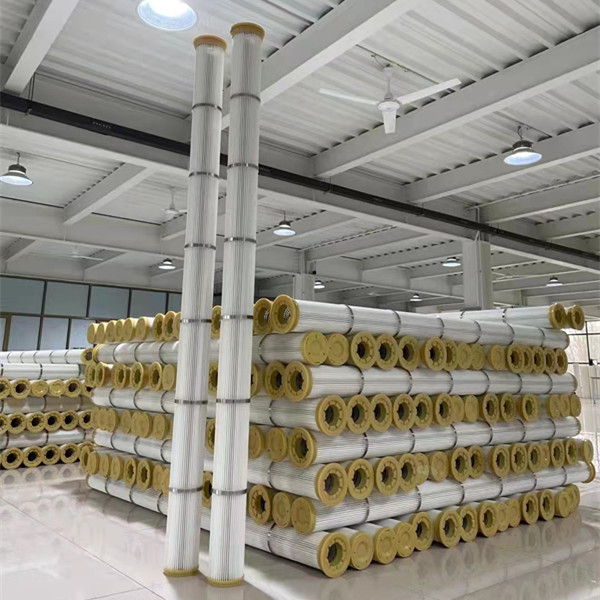
Figure 2: Close-up view revealing the intricate pleating of industrial air filter cartridges.
Typical Parameters Table for Industrial Air Filter Cartridges
Below is a table illustrating typical performance parameters for various types of industrial air filter cartridges. This data represents a composite of common industry offerings and highlights the range of capabilities available.
| Parameter | Standard Polyester Media | PTFE Membrane Media | Nanofiber Coated Media | Flame Retardant Media |
|---|---|---|---|---|
| Material | Spunbond Polyester | Spunbond Polyester with ePTFE Membrane | Spunbond Polyester with Nanofiber Layer | Flame Retardant Cellulose/Polyester Blend |
| Filtration Efficiency (0.3 µm) | 99.5% | 99.99% | 99.995% | 99.5% |
| MERV Rating (ASHRAE 52.2) | MERV 10-12 | MERV 15-16 | MERV 16+ | MERV 10-12 |
| Max Operating Temp. | ~135°C (275°F) | ~135°C (275°F) | ~135°C (275°F) | ~80°C (176°F) |
| Surface Treatment | Heat Set, Singed | Hydro/Oleophobic | Proprietary Nanofiber Coating | Flame Retardant Additive |
| Dust Holding Capacity | Good | Excellent (Surface Loading) | Very Good | Good |
| Primary Application | General Dust, Abrasive Dusts | Fine, Sticky, Hygroscopic Dusts, Pharmaceutical | Welding Fumes, Laser Cutting, Fine Powders | Combustible Dusts (e.g., Wood, Grain) |
| Expected Lifespan (Avg.) | 12-24 Months | 18-36 Months | 18-30 Months | 9-18 Months |
| Pressure Drop (Initial) | Low-Medium | Low | Low | Medium |
Applications of Industrial Cartridge Dust Collectors and Filters
Industrial air filter cartridges are integral to a vast range of industries, each presenting unique challenges in terms of particulate control. Our Industrial Removal Cartridge Dust Filter is engineered to provide robust performance across these diverse sectors:
- Metalworking and Fabrication: Capturing welding fumes, grinding dust, plasma cutting particulate, and abrasive dusts from polishing operations. These filters protect workers from hazardous airborne particles and prevent damage to precision machinery.
- Pharmaceutical and Chemical Processing: Essential for maintaining cleanroom conditions, preventing cross-contamination, and recovering valuable active pharmaceutical ingredients (APIs). High-efficiency PTFE membrane filters are often employed here due to their excellent dust release properties and chemical resistance.
- Food and Beverage Industry: Used in mixing, drying, and packaging processes to collect fine food powders (e.g., flour, sugar, spices) and ensure product purity. Filters must often meet FDA compliance standards for direct contact.
- Woodworking: Collecting sawdust, wood chips, and fine wood dust, which can be combustible. Flame-retardant filter media is crucial in these applications.
- Cement and Mining: Handling large volumes of abrasive and fine mineral dusts from crushing, grinding, and conveying processes. Filters with high burst strength and durable media are required.
- Plastics and Composites: Filtering dust and fibers generated during grinding, cutting, and shaping of plastics, fiberglass, and carbon fiber.
- Thermal Spray and Coating Operations: Capturing metal and ceramic powders, often at elevated temperatures, to maintain air quality and recover expensive overspray materials.
- Pneumatic Conveying Systems: Used at receiver bins to separate conveyed material from the transport air, preventing product loss and ensuring clean air discharge.
Each application demands a nuanced understanding of dust characteristics (size, abrasiveness, combustibility, stickiness) and environmental conditions (temperature, humidity, chemical presence) to specify the optimal industrial cartridge dust collector configuration and filter type. Our expertise ensures tailored solutions for maximum effectiveness.
Manufacturing Process of Industrial Air Filter Cartridges: From Raw Material to High-Performance Filter
The creation of a high-performance industrial air filter cartridges involves a meticulous, multi-stage manufacturing process, combining advanced material science with precision engineering. Our commitment to quality ensures every cartridge meets stringent performance and durability standards. Below is a simplified, yet illustrative, breakdown of the typical manufacturing workflow:
1. Raw Material Sourcing & Preparation
Description: This initial stage involves the selection and quality inspection of base filter media (e.g., spunbond polyester, cellulose pulp, glass fiber). For specialized filters, raw materials for PTFE membranes, nanofiber coatings, or flame-retardant treatments are prepared. All incoming materials undergo rigorous quality checks to ensure they meet specified mechanical, chemical, and filtration properties. For instance, polyester media density, tensile strength, and initial permeability are verified. Raw materials like steel for end caps and inner cores are also inspected for gauge, finish, and alloy composition (e.g., galvanized, stainless steel).
2. Media Treatment & Coating (if applicable)
Description: Depending on the filter type, the base media may undergo various treatments. This can include heat setting for stability, singeing to remove loose fibers, or the application of specialized coatings. For example, a PTFE membrane is laminated onto the base media, or a nanofiber layer is electrospun onto its surface. Flame retardant chemicals might be impregnated, or an oleophobic/hydrophobic treatment applied to enhance resistance to oil and moisture. This step is critical for imparting specific properties like enhanced efficiency, improved dust release, or chemical resistance.
3. Pleating
Description: The treated filter media is precisely folded into a pleated configuration using specialized pleating machinery. The pleat height, count, and spacing are critical to maximize the effective surface area of the filter within its given dimensions. Consistent pleat spacing ensures even airflow distribution and dust loading, preventing premature blinding of the media. Advanced pleating technologies ensure uniform pleat geometry and stability throughout the filter's life, preventing pleat collapse.
4. Media Seaming & Bonding
Description: The pleated media is formed into a cylindrical shape, and the longitudinal seam is sealed. This can be done through hot melt bonding, ultrasonic welding, or stitching, ensuring an airtight seal that prevents unfiltered air bypass. The method chosen depends on the media type and required bond strength. This step is crucial for maintaining the integrity of the filter element.
5. Inner Core Insertion & Outer Cage Assembly (if applicable)
Description: A perforated metal inner core (often galvanized or stainless steel) is inserted into the pleated media cylinder. This core provides structural support against pressure differentials and prevents pleat collapse during operation and pulse-jet cleaning. In some designs, an outer protective mesh or cage is also added to shield the pleats from physical damage.
6. End Cap Molding/Attachment
Description: Custom-designed end caps (typically made from polyurethane, steel, or other durable polymers) are attached to both ends of the pleated media and core assembly. These end caps provide the structural integrity for mounting into the dust collector. They are usually molded directly onto the filter media and core, ensuring a strong, leak-proof seal. Our end caps are precisely manufactured to ANSI standards for fitment.
7. Curing & Finishing
Description: After end cap attachment, the entire assembly may undergo a curing process, especially for polyurethane end caps, to ensure a strong, permanent bond. Additional finishing touches, such as sealing gaskets or installing specialized hardware, are completed.
8. Quality Control & Testing
Description: Every industrial air filter cartridges undergoes rigorous quality checks. This includes visual inspection for defects, dimensional verification (OD, ID, length), burst strength testing, and media integrity checks. For critical applications, filters may undergo initial pressure drop testing and even particle penetration tests (e.g., using a DOP test for HEPA equivalent filters) to confirm filtration efficiency. Compliance with ISO 9001 quality management systems is strictly adhered to, ensuring consistency and reliability across batches.
9. Packaging & Shipping
Description: Finished filters are carefully packaged to prevent damage during transit, often using protective wraps and sturdy cartons. They are then prepared for shipment to customers worldwide.
This detailed process ensures that each Industrial Removal Cartridge Dust Filter is a product of precision engineering, built to deliver superior performance and longevity even in the harshest industrial environments.
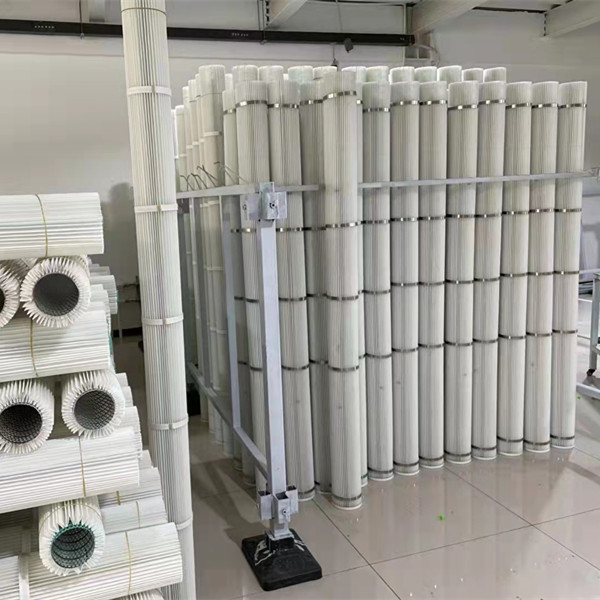
Figure 3: Stages of manufacturing an industrial air filter cartridge, highlighting precision and quality control.
Technical Advantages of Our Industrial Removal Cartridge Dust Filter
Our Industrial Removal Cartridge Dust Filter is engineered with a suite of technical advantages that set it apart in the demanding industrial landscape, ensuring optimal performance, longevity, and cost-efficiency. Key benefits include:
- Superior Filtration Efficiency: Leveraging advanced media, including nanofiber technology and high-grade spunbond polyester, our filters achieve filtration efficiencies up to 99.995% for sub-micron particles. This exceptional capability ensures cleaner air discharge, significantly exceeding environmental regulations and protecting sensitive downstream equipment. For instance, in a typical cement plant, our filters can reduce particulate emissions from hundreds of mg/m³ down to less than 5 mg/m³, far surpassing EPA PM2.5 standards for industrial sources.
- Extended Service Life: Through optimized pleat geometry and high dust-holding capacity media, our industrial air filter cartridges offer significantly longer operational lifespan compared to conventional filters. This reduces replacement frequency, minimizing maintenance downtime and associated labor costs. Our filters typically exhibit 20-30% longer life in similar applications due to superior dust cake release and media durability.
- Energy Efficiency: Designed with a focus on minimizing pressure drop, our filters reduce the load on the dust collector's fan and motor. A lower consistent pressure drop translates directly into substantial energy savings over the operational life of the filter. For example, reducing pressure drop by just 1 inch water gauge (WG) across a large dust collector can save thousands of dollars annually in electricity costs.
- Robust Construction & Durability: Featuring corrosion-resistant end caps (e.g., galvanized steel or high-strength polyurethane) and robust inner core construction, our filters withstand harsh industrial environments, high differential pressures, and aggressive pulse-jet cleaning cycles. This structural integrity prevents premature failure and ensures reliable performance. Our filters have been tested to withstand burst pressures exceeding 10 kPa (40 inches WG).
- Excellent Dust Release Characteristics: Filters with a smooth, non-stick surface (like those incorporating PTFE membranes or special surface treatments) allow for more effective pulse-jet cleaning. This "surface loading" rather than "depth loading" of dust leads to more complete dust cake removal, maintaining lower operating pressure drop and extending intervals between cleanings.
- Versatility and Customization: Available in a wide range of media types (e.g., anti-static, flame retardant, oleophobic, PTFE membrane), sizes, and configurations, our filters can be customized to precisely match specific application requirements, whether it's high temperature, abrasive dust, or chemically aggressive environments.
- Cost-Effectiveness: While initial investment might be competitive, the true cost-effectiveness of our industrial air filter cartridges comes from their longer lifespan, reduced energy consumption, lower maintenance needs, and superior protection for valuable machinery. The total cost of ownership (TCO) is significantly reduced.
Manufacturer Comparison: Why Choose Our Industrial Removal Cartridge Dust Filter?
The market for industrial air filter cartridges is competitive, with numerous manufacturers offering various solutions. However, a deeper look reveals significant differences in quality, performance, and long-term value. Here's how our Industrial Removal Cartridge Dust Filter stands out:
Key Differentiators and Competitive Advantages:
- Uncompromising Quality Control: Unlike some manufacturers who might cut corners, we adhere to the most stringent quality control protocols at every stage, from raw material sourcing to final product testing. Our filters are manufactured under ISO 9001 certified conditions, ensuring consistency and reliability that minimizes the risk of premature failure and unscheduled downtime. This commitment to quality is verifiable through our extensive internal testing and third-party audits.
- Proprietary Media Technology: We invest heavily in R&D to develop and utilize proprietary filter media technologies, such as advanced nanofiber coatings and optimized PTFE membranes. These innovations lead to higher filtration efficiencies, lower pressure drop, and superior dust release compared to standard off-the-shelf media used by competitors. This results in tangible energy savings and extended filter life for our customers.
- Application-Specific Expertise: We don't just sell filters; we provide comprehensive filtration solutions. Our team of engineers possesses deep industry knowledge across diverse sectors (e.g., petrochemical, metallurgy, pharmaceuticals). We offer expert consultation to analyze your specific dust characteristics, airflow requirements, and operational conditions, ensuring you get the precisely correct industrial air filter cartridges for maximum performance, rather than a generic fit.
- Proven Track Record and Customer Support: With over 20 years of experience in the industrial filtration sector, we have a long history of successful installations and satisfied clients globally. Our dedicated customer support team provides exceptional pre-sales consultation, technical assistance, and responsive after-sales service, ensuring seamless integration and optimal performance throughout the filter's lifecycle. We pride ourselves on building long-term partnerships.
- Certifications and Compliance: Our products meet or exceed industry standards such as ASHRAE 52.2 (for MERV ratings), EN 1822 (for HEPA/ULPA), and often local regulatory requirements (e.g., ATEX for explosive dust environments). We provide comprehensive documentation and test reports to verify compliance, giving our clients complete peace of mind.
- Customization Capabilities: While many offer standard sizes, our capacity for customization extends to specialized media treatments, unique end cap designs, and specific material compositions (e.g., food-grade materials, anti-corrosion components) to perfectly match unique operational demands, something smaller or less flexible manufacturers often cannot provide.
Choosing Anyafiltermedia's Industrial Removal Cartridge Dust Filter means investing in unparalleled quality, superior performance, and a partnership with a trusted industry leader dedicated to your operational success and environmental compliance.
Customization Solutions and Tailored Industrial Filter Cartridges
Recognizing that every industrial application presents its unique set of challenges, our strength lies in providing highly customized industrial air filter cartridges solutions. The 'one-size-fits-all' approach is often insufficient for achieving optimal air quality and operational efficiency in complex industrial environments. Our expertise allows us to engineer filters that precisely match your specific needs, enhancing performance and cost-effectiveness.
Our Customization Process:
- Detailed Needs Assessment: We begin by thoroughly understanding your application. This includes:
- Dust Characteristics: Particle size distribution, abrasiveness, stickiness, hygroscopicity, combustibility (Kst, Pmax values), and chemical composition.
- Operating Conditions: Airflow volume (CFM/m³/hr), temperature range, humidity levels, presence of corrosive gases or oil mists.
- Dust Collector Specifications: Type (pulse-jet, reverse air), existing filter dimensions, mounting style (open/closed end, flange size), cleaning system parameters.
- Performance Goals: Desired emission levels, target filter lifespan, energy efficiency goals.
- Media Selection and Treatment: Based on the assessment, we recommend the optimal filter media. Options include:
- Standard Polyester: For general industrial dust.
- PTFE Membrane: Ideal for sticky, hygroscopic, or fine dusts, offering excellent dust release. For instance, in a pharmaceutical powder recovery, a PTFE membrane filter can prevent blinding and ensure higher product recovery rates.
- Nanofiber Coated: For sub-micron particles like welding fumes or laser cutting dust, providing superior efficiency and lower pressure drop.
- Anti-Static (Aluminized/Carbon Conductive): Crucial for combustible dusts (e.g., wood, grain, some metals) to dissipate static electricity and prevent ignition, meeting ATEX directives.
- Flame Retardant: For applications with spark risk or combustible dusts.
- Oleophobic/Hydrophobic: Treated to repel oil and water, enhancing performance in high humidity or oil mist environments.
- Structural Customization: We can modify filter dimensions (diameter, length), end cap materials (galvanized steel, stainless steel, aluminum, polyurethane), and gasket types (neoprene, EPDM, silicone) to ensure perfect fit and chemical compatibility with your existing dust collector. We also offer various inner core designs for enhanced strength.
- Prototype and Testing: For highly specialized or novel applications, we can develop prototypes and conduct in-house or third-party performance testing to validate the custom design before full-scale production.
This tailored approach ensures that our industrial air filter cartridges not only fit perfectly but also deliver peak performance, extend maintenance cycles, and significantly reduce operational costs, making them a strategic asset for your business.
Application Cases: Industrial Removal Cartridge Dust Filter in Action
Our Industrial Removal Cartridge Dust Filter has been successfully deployed in a multitude of challenging industrial environments, demonstrating its superior performance and reliability. These real-world applications underscore our product's versatility and the tangible benefits it delivers.
Case Study 1: Pharmaceutical Powder Manufacturing
Challenge: A leading pharmaceutical manufacturer faced issues with excessive dust emissions during tablet pressing and coating operations. Fine, sticky pharmaceutical powders were blinding existing filters quickly, leading to frequent filter replacements, high maintenance costs, and a risk of product cross-contamination. Strict FDA and local environmental regulations mandated extremely low particulate emissions.
Solution: We provided custom-designed industrial air filter cartridges featuring an advanced PTFE membrane media. This media offers superior surface loading characteristics, preventing depth penetration of sticky powders and allowing for efficient pulse-jet cleaning. The end caps were made from FDA-compliant polyurethane.
Result: The client experienced a 70% reduction in filter replacement frequency, extending filter life from 4 months to over 14 months. Emissions were consistently maintained well below regulatory limits, ensuring compliance and enhancing product purity. The client reported significant savings in maintenance labor and filter procurement costs, alongside improved operational uptime due to fewer filter change-outs. "The new filters have transformed our dust collection system, making it far more reliable and cost-effective," commented the plant manager.
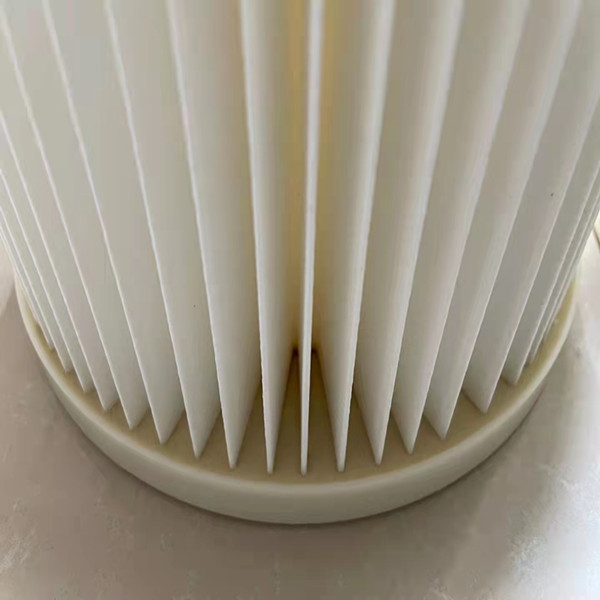
Figure 4: Industrial air filter cartridges installed in a large dust collection system.
Case Study 2: Steel Fabrication and Welding Shop
Challenge: A large steel fabrication facility struggled with high concentrations of welding fumes and fine metal dust from grinding and cutting operations. This posed severe health risks to workers and caused rapid wear on machinery. Their existing baghouse filters were ineffective against the fine particulate, resulting in poor indoor air quality and frequent filter blinding.
Solution: We recommended and supplied our Industrial Removal Cartridge Dust Filters with nanofiber coated media. This specific type of industrial air filter cartridges is highly effective at capturing sub-micron welding fumes and fine metallic dust, offering MERV 16+ efficiency. The robust construction was designed to withstand the abrasive nature of the metal dust and the thermal stresses from welding operations.
Result: Indoor air quality improved dramatically, with airborne particulate levels reduced by over 90%. Workers reported a noticeable improvement in breathing conditions. The nanofiber filters maintained a consistently low pressure drop, leading to an estimated 15% reduction in fan energy consumption. Filter lifespan increased by approximately 50% compared to their previous filters. The plant safety officer noted, "Our air quality reports are excellent now, and our employees appreciate the cleaner working environment. These filters were a game-changer."
Case Study 3: Grain Processing and Storage Facility
Challenge: A major grain elevator faced significant challenges with highly combustible grain dust during conveying and storage operations. The risk of dust explosions was a constant concern, requiring filters with anti-static properties. Additionally, the high volume of dust caused rapid filter saturation and frequent, labor-intensive replacements.
Solution: We engineered anti-static (aluminized) industrial air filter cartridges specifically for their dust collectors. These filters incorporated media designed to dissipate static charges, significantly reducing the ignition risk. Their design also focused on maximizing dust holding capacity for high dust loads characteristic of grain processing.
Result: The facility achieved full compliance with ATEX directives for combustible dust environments, enhancing safety for personnel and assets. Filter lifespan improved by 30%, leading to fewer shutdowns for maintenance and a substantial reduction in operational costs. The facility manager reported increased confidence in their dust collection system's ability to handle the combustible dust safely and efficiently. "Safety is paramount for us, and these filters have greatly enhanced our explosion prevention strategy while also being incredibly durable," stated the operations manager.

Figure 5: High-performance industrial air filter cartridges ready for installation.
Frequently Asked Questions (FAQ) about Industrial Air Filter Cartridges
A1: The lifespan of an industrial air filter cartridges varies significantly based on several factors, including the type of dust (abrasive, sticky, fine), dust load concentration, operating hours, temperature, humidity, and the effectiveness of the dust collector's cleaning system (e.g., pulse-jet duration and frequency). Generally, they can last anywhere from 6 months to over 3 years. High-quality media, proper system design, and effective cleaning cycles can significantly extend their life.
A2: The primary indicator for replacement is a significant increase in the differential pressure across the filter. As dust accumulates, resistance to airflow rises, leading to higher energy consumption and reduced airflow through the system. Most systems have a pressure gauge or manometer to monitor this. Other signs include visible dust emissions from the stack, reduced suction at the pickup points, or damage to the filter media.
A3: While some industrial air filter cartridges media types (e.g., spunbond polyester with certain coatings) are designed for pulse-jet cleaning within the dust collector, manual cleaning outside the collector is generally not recommended for most filter types, as it can damage the delicate filter media and reduce efficiency. Filters designed with PTFE membranes are particularly effective at releasing dust during pulse cleaning, which extends their effective life significantly.
A4: Surface loading occurs when dust particles primarily accumulate on the surface of the filter media, forming a dust cake that can be easily dislodged during cleaning (e.g., pulse-jet). This is ideal for sticky or fine dusts and is characteristic of filters with PTFE membranes or nanofiber coatings. Depth loading occurs when dust particles penetrate into the filter media, becoming embedded within the fibers. While providing good filtration initially, it leads to faster blinding and makes cleaning less effective, typically seen with conventional media and fine, non-sticky dusts. Surface loading filters generally offer longer life and better pulse-cleaning efficiency.
A5: Key certifications include ISO 9001 (for quality management systems of the manufacturer), ASHRAE 52.2 (for MERV ratings and filtration efficiency), and possibly EN 1822 (for HEPA/ULPA performance). For specific applications, look for compliance with ATEX directives (for combustible dust environments) or FDA standards (for food/pharmaceutical applications). These certifications ensure the filter meets recognized performance and safety criteria.
A6: The filter media material is paramount. Polyester spunbond is general-purpose, durable, and good for abrasive dusts. PTFE membrane excels with fine, sticky, or hygroscopic dust due to its non-stick surface. Nanofiber provides superior sub-micron filtration for fumes and very fine particles. Cellulose is cost-effective for dry, non-abrasive dusts but has lower temperature limits. Specialized treatments (e.g., anti-static, flame retardant, oleophobic) adapt the media for specific environmental or safety requirements, directly impacting efficiency, lifespan, and suitability for hazardous dusts or challenging conditions.
A7: For our standard industrial air filter cartridges, typical delivery lead times range from 2-4 weeks, depending on order volume and current production schedules. For highly customized solutions, involving specific media treatments or unique dimensions, the lead time may extend to 4-8 weeks, accounting for design, material sourcing, and specialized manufacturing processes. We strive to provide accurate lead time estimates at the time of quotation and work closely with clients on urgent requirements, offering expedited production options where feasible. Our global logistics network ensures efficient and timely delivery to your facility.
Commitment to Trustworthiness: Quality Assurance, Warranty, and Customer Support
At Anyafiltermedia, trust is the foundation of our business. We understand that reliable air filtration is critical to your operations, safety, and compliance. Our commitment to trustworthiness is reflected in every aspect of our service and product lifecycle for our industrial air filter cartridges.
- Rigorous Quality Assurance: Every Industrial Removal Cartridge Dust Filter undergoes stringent quality control checks at multiple stages of production, from raw material inspection to final product performance validation. We adhere to ISO 9001:2015 quality management systems, ensuring that each filter meets the highest standards for construction, media integrity, and dimensional accuracy. Our testing protocols include burst strength tests, initial pressure drop measurements, and visual inspections for any manufacturing defects. This meticulous approach minimizes the likelihood of field failures and maximizes filter lifespan.
- Comprehensive Warranty: We stand behind the quality and performance of our industrial air filter cartridges. Our products come with a standard warranty that covers manufacturing defects and material integrity under normal operating conditions. Specific warranty terms will be provided with your quotation, giving you peace of mind and protecting your investment. Our commitment extends to ensuring product performance aligns with our specifications, offering support in the rare event of an issue.
- Dedicated Customer Support and Technical Assistance: Our expert team is available to provide comprehensive support throughout your experience with our products.
- Pre-Sales Consultation: Our engineers work with you to understand your specific application, dust characteristics, and operational environment to recommend the most suitable industrial air filter cartridges, ensuring optimal performance and compliance.
- Technical Support: We offer ongoing technical assistance, including guidance on installation, troubleshooting performance issues, and optimizing filter replacement schedules. Our goal is to help you maximize the efficiency and lifespan of your filtration system.
- Responsive After-Sales Service: Should any concerns arise post-purchase, our dedicated support team is readily available to address them promptly and effectively, ensuring minimal disruption to your operations.
- Transparent Information: We provide clear, detailed product specifications, performance data, and certifications. We believe in complete transparency, allowing our customers to make informed decisions based on reliable data. We're happy to provide test reports and compliance documents upon request.
By prioritizing quality, providing robust warranties, and offering unparalleled customer support, we build lasting relationships based on trust and mutual success. Your clean air and operational efficiency are our top priorities.
Conclusion and Industry Outlook
The role of industrial air filter cartridges is more critical than ever in an era defined by stricter environmental regulations, heightened awareness of occupational health, and the pursuit of operational excellence. As industries continue to evolve, so too must their approach to air quality management. Our Industrial Removal Cartridge Dust Filter represents the pinnacle of modern filtration technology, engineered to meet and exceed the diverse and demanding requirements of industrial applications worldwide.
Looking ahead, the market for industrial dust collector cartridge filters and industrial cartridge dust collector systems will continue its growth trajectory, driven by innovations in smart filtration, sustainable materials, and increasingly specialized solutions. The emphasis will remain on maximizing filtration efficiency while minimizing energy consumption and total cost of ownership. Companies that invest in high-quality, performance-driven filtration solutions like ours will not only achieve compliance but also gain a significant competitive advantage through enhanced productivity, reduced maintenance, and a healthier workforce. We are committed to leading this evolution, consistently delivering solutions that empower industries to operate cleaner, safer, and more efficiently.
Further Reading and Industry Insights:
- For more in-depth understanding of air filtration standards: ASHRAE Standards - ASHRAE.org
- Explore advanced filter media technologies: The Impact of Nanofiber Technology on Air Filtration Systems - Filter Magazine
- Insights into industrial dust collection trends: Industrial Dust Collector Trends for 2024 - Power Magazine
- Understanding combustible dust regulations: Combustible Dust National Emphasis Program - OSHA.gov
Post time: Aug-08-2025

